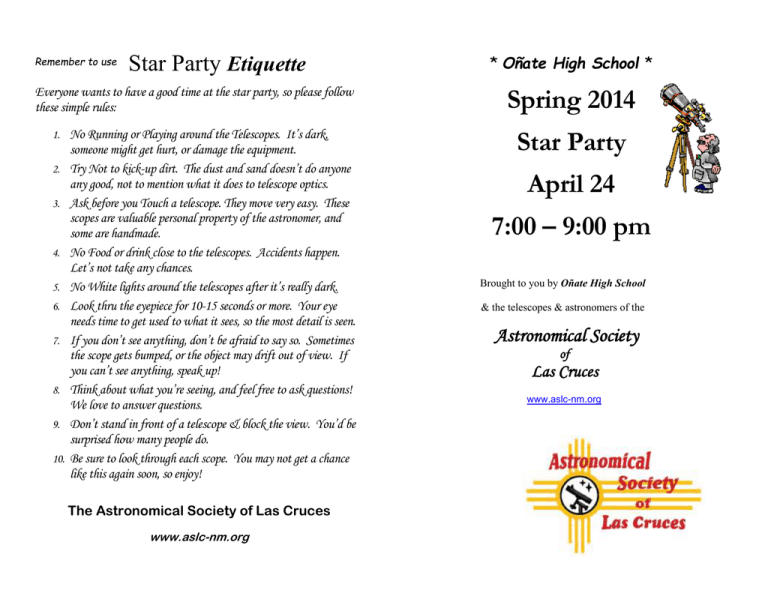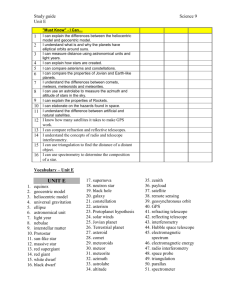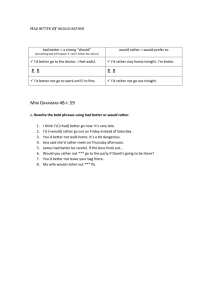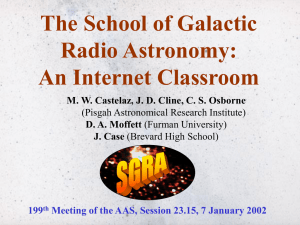20140424KatN - Las Cruces Public Schools
advertisement

Remember to use Star Party Etiquette Everyone wants to have a good time at the star party, so please follow these simple rules: 1. No Running or Playing around the Telescopes. It’s dark, 2. 3. 4. 5. 6. 7. 8. 9. 10. someone might get hurt, or damage the equipment. Try Not to kick-up dirt. The dust and sand doesn’t do anyone any good, not to mention what it does to telescope optics. Ask before you Touch a telescope. They move very easy. These scopes are valuable personal property of the astronomer, and some are handmade. No Food or drink close to the telescopes. Accidents happen. Let’s not take any chances. No White lights around the telescopes after it’s really dark. Look thru the eyepiece for 10-15 seconds or more. Your eye needs time to get used to what it sees, so the most detail is seen. If you don’t see anything, don’t be afraid to say so. Sometimes the scope gets bumped, or the object may drift out of view. If you can’t see anything, speak up! Think about what you’re seeing, and feel free to ask questions! We love to answer questions. Don’t stand in front of a telescope & block the view. You’d be surprised how many people do. Be sure to look through each scope. You may not get a chance like this again soon, so enjoy! The Astronomical Society of Las Cruces www.aslc-nm.org * Oñate High School * Spring 2014 Star Party April 24 7:00 – 9:00 pm Brought to you by Oñate High School & the telescopes & astronomers of the Astronomical Society of Las Cruces www.aslc-nm.org The info below briefly describes the objects we will probably look at – it will help you better understand & remember what you see tonight, after looking carefully through each scope and listening to the astronomer. 1. Jupiter. The fifth planet from our Sun is high in the southwest tonight. It is a gas giant, which means it may have no solid center at all and may be entirely a giant ball of gas. It contains more mass than all the other planets combined. 2. Pleiades. Low in the west is an open cluster with many names including Pleiades, Seven Sisters, and Subaru. It is a compact group of very hot and bright blue-white stars. There are more than seven stars, but usually only seven are visible without aid of a telescope. 3. Great Orion Nebula. Also known by its catalog number M42, the 42nd entry in Charles Messier's list published in 1771, the Orion Nebula is a starforming area of hot stars, dust, and gas. The brightest nebula in our sky, it is visible without a telescope as the middle "fuzzy star" in Orion's sword. 4. Mars. The fourth planet from the Sun, one of Earth’s neighbors, was in opposition ten days ago, which means that it was then in nearly a straight line from the Sun through the Earth. Mars will rise tonight before the Sun sets. The ruddy red color of Mars is mostly due to iron oxide on its surface and is why it is called “The Red Planet”. We jokingly say it is made of rust, but don’t believe everything you hear. 5. Double Cluster. This is a pair of open star clusters that are close enough visually to be seen together in a small telescope. Both are approaching Earth at about 13 miles per second, but are about 7000 light years away and at that velocity are in no danger of crashing into us. One light-year is about six trillion miles. 6. Saturn. Saturn is the sixth planet from the Sun, and tonight rises just before 9:00pm. It may clear the mountains to the east in time for us to view it tonight. Saturn is a gas giant smaller than Jupiter and has a beautiful ring system consisting mostly of chunks of ice. The NASA Cassini spacecraft has been orbiting Saturn for years, taking close-up pictures.









